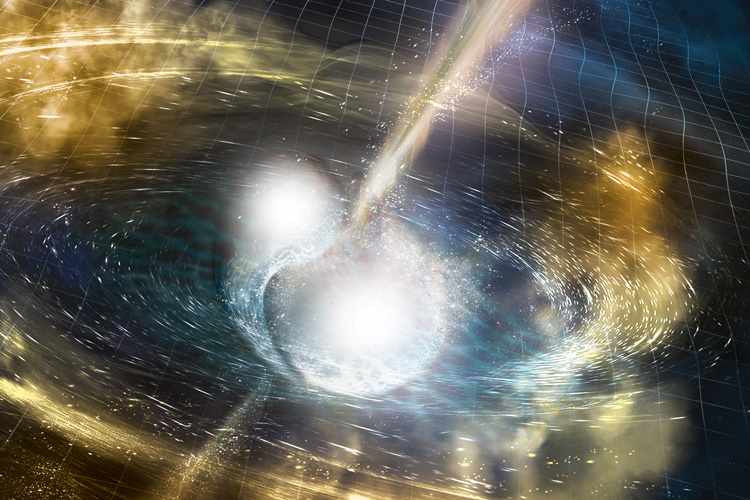News
New center to focus on physics of ultra-dense neutron stars
 Artist’s conception of a neutron star merger, which creates a whirling cloud of radioactive debris and a short gamma-ray burst (jets). (Image courtesy of National Science Foundation/LIGO/Sonoma State University/A. Simonnet)
Artist’s conception of a neutron star merger, which creates a whirling cloud of radioactive debris and a short gamma-ray burst (jets). (Image courtesy of National Science Foundation/LIGO/Sonoma State University/A. Simonnet) The National Science Foundation (NSF) has awarded UC Berkeley $10.9 million over five years to expand research on the exotic state of matter inside neutron stars — the dense remains of exploded stars — and what can be learned from the growing number of gravitational wave detectors now listening for the spacetime vibrations generated by the violent merger of two neutron stars.
The Network for Neutrinos, Nuclear Astrophysics and Symmetries (N3AS) is an NSF Physics Frontier Center led by Wick Haxton, Berkeley professor of physics and a theoretical nuclear physicist at Lawrence Berkeley National Laboratory (Berkeley Lab).
The N2AS center, involving 13 institutions, will focus on using the most extreme environments found in astrophysics — the Big Bang, supernovae and neutron star and black hole mergers — as laboratories for testing fundamental physics under conditions beyond the reach of Earth-based labs.
The light – optical, infrared, X-ray, and gamma ray – emitted after the merger can tell scientists about the hot, radioactive debris produced in and ejected by the merger. Such observations in 2017 confirmed for the first time that elements heavier than iron were being manufactured and ejected by neutron star mergers. Berkeley N3AS members Dan Kasen, professor of physics, and Eliot Quataert, professor of astronomy, played a key role in the theoretical work that led to this conclusion.
